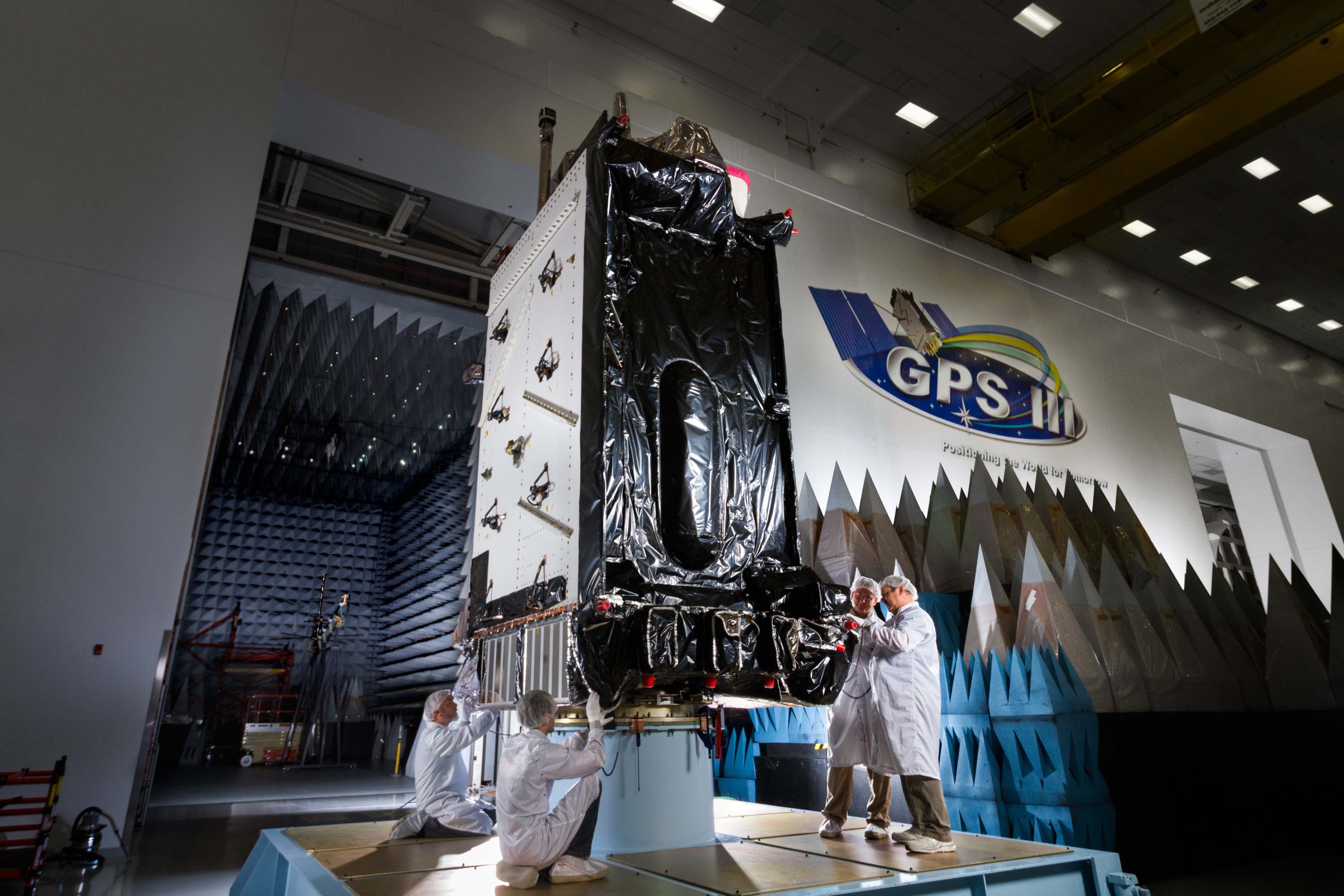
Lockheed Martin employees work on a GPS III satellite. Lockheed Martin photo.
The cost of military GPS III terminals and ground systems and of Joint Direct Attack Munitions increased significantly from 2016 to 2017, while program costs for the C-130J and Evolved Expendable Launch Vehicle program saw cost decreases of at least $1 billion.
The Defense Department on Tuesday released its most recent Selected Acquisition Report to Congress, outlining performance changes across 83 programs from December 2016 to December 2017. There was a net cost increase of $33.2 billion, or 1.78 percent, for all but one of the programs, which was reporting for the first time. Cost increases were due primarily to increases in the quantities procured, extended development and procurement schedules, engineering changes to hardware and software, and increased program cost estimates, according to the report.
Military GPS User Equipment Increment 1 saw the largest cost increase by percentage, jumping $265.1 million, or 22.7 percent, from $1.1 billion to $1.4 billion. The increase is attributed mostly to efforts “to align with the approved Milestone B cost estimate,” which is considered the official start of the program, and a revised estimate of DOD funding, according to the report.
GPS III satellites have an advanced signal, known as M-code, that make it more difficult to jam the satellites. Lockheed Martin is under contract to provide the first 10 GPS III satellites, and Harris Corporation will provide the navigation payloads for each vehicle. The Air Force on March 14 awarded SpaceX a $290.6 million contract to launch the first three GPS III satellites between 2019 and 2020.
Program costs for the GPS III Next Generation Operational Control System, or OCX, skyrocketed $665.3 million from $5.4 billion to $6 billion. When OCX Block 0 was finally delivered to the Air Force in November 2017, Space and Missile Systems Center commander Lt. Gen. John Thompson called it “a historically troubled program.”
The Government Accountability Office also has blasted the OCX program, noting last May it was five years behind schedule and Block 1 is not slated to be ready until 2021. That means many of the advanced features built into the GPS III system, like enhanced cybersecurity, will still be more than three years away, according to the GAO.
The $1.2 billion cost increase for Joint Direct Attack Munitions, on the other hand, is attributed to the fact that DOD has purchased an additional 34,690 tailkits as it looks to replenish its munitions stocks depleted in the ongoing war against ISIS and other terrorist groups in the Middle East and in Africa, as well as an increased demand for Laser JDAM production, according to the report.
Two Air Force programs saw cost decreases of at least $1 billion, including the C-130J program, which decreased 9.9 percent from $15.8 billion to $14.2 billion due primarily to removal of the Block 7/ 8.1 upgrade. The Evolved Expendable Launch Vehicle program also saw a cost decrease of 3.4 percent, or $2 billion, from $59.2 billion to $57.2 billion, due mostly to the fact that the number of launches decreased from 168 to 160.
